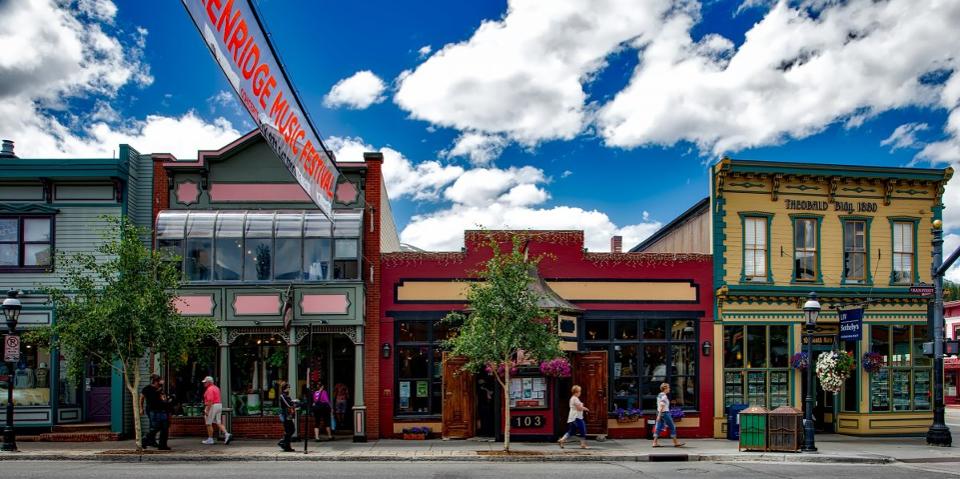The biggest competitor on the retail horizon is more likely to be called David than Big Department Store, and he’s got a slingshot full of technology to help him stand his ground.
As major brands from Macy’s to Foot Locker wrestle with competition from Amazon, small independent merchants are gaining a foothold on the retail landscape. More than half (54%) of U.S. sales are generated by small businesses, according to the Small Business Association, and that figure could likely rise.
Why? Technology has much to do with the small retailer’s ability to level the selling field, but other surfacing forces, including those influenced by age, are providing the velocity.
With July being Independent Retailer Month, the time is ripe to explore how small independents are reclaiming their status as a major competitive force, and as crucial components of a thriving community. Following are four ways the little local guy is emerging as a giant in retail.
1: Hyper-Local Power
Social media has yielded a nation of sharers, and they’re accustomed to immediate gratification. They also have high expectations of being heard and understood — but not just online. Increasingly, they want the support of their digital community to extend to the physical community, and this includes commerce.
Small shops, particularly those operated by long-time residents, serve as living-and-knowing communities. They connect with the local population on trends and nearby happenings — a relevant feature among younger shoppers who know the owner and feel invested in his success. None of this is new, except that today the shopper likely follows the merchant on Facebook and promotes him socially.
However, to manage an edge over giants like Amazon, corner shops have to answer to the need of immediacy, meaning fast delivery. More than 40% of consumers (41%) want “hyper-local” delivery, with control over how, when and where their products ship, according to the report “State of Shipping in Commerce” by the fulfillment software firm Temando. Of those shoppers, 38% said they’ll pay for it — but just 24% of retailers offer it.
Fortunately, investors are responding to the demand for hyper-local delivery. Venture capitalists have upped their funding in supply chain and logistics startups more than tenfold in three years, to $2.8 billion from $266 million in 2013, reports “The New Delivery Reality: Achieving High Performance in the Post and Parcel Industry,” by Accenture.
2: Internet Democracy
One way to accommodate the demand for hyper-local delivery is by selling one’s products via Amazon (Amazon shipments for independent merchants doubled in 2016 to 2 billion). Similarly, Etsy, Bonanza, eBay and other platforms, combined with easier and more affordable transaction-processing technologies, enable small merchants to sell their goods as part of the long-tail economy.
The loyalty research firm COLLOQUY coined a term for the emergence of small retailers via digital marketplaces: MomPopolies. These are mom-and-pop shops that have the engagement power to compete with major competitors, yet maintain a local edge. Mix in the element of social media and we are seeing more mom-and-pop social shopping communities — digital marketplaces that combine independent wares from around the world with shopper feedback.
The power of social communities can build empires. A jeweler in New Mexico can compete with Nordstrom in Seattle (assuming delivery is overnight). Or a maker of Bohemian headbands and accessories can make $80,000 a month on Etsy, as was the case for the shop Three Birds Nestbefore its owner, a mother of three, spun it off on its own.
3. Digital Natives
They may have cut their teeth on smartphones, but most of the members of Generation Z prefer the taste of physicality when shopping, research shows.
Nearly seven in 10 members of Gen Z (67%) shop in brick-and-mortar stores most of the time, with another 31% shopping in-store sometimes, according to a survey by IBM and the National Retail Federation. Defined as those born from the mid-1990s to the mid-2000s, Gen Zers could have significant influence on which of those physical merchants survive. The population counts nearly 70 million spenders in the United States — 2.5 billion worldwide.
What they want in a retailer may be easier for little local guys to capture: authenticity. Being digital natives with lifetimes of online exposure, members of this generation are highly sensitive to sharing personal information, and they are more demanding of transparency and trust. Quality also is critical; 66% of the IBM/National Retail Federation respondents said quality and availability are the most important factors when choosing a store.
4. Digital Money
Independent currencies, the offspring of Bitcoin, are launching with specific markets and missions in mind, notably to support local vendors. Enter Colu, which specializes in generating localized digital currencies earmarked for spending with (and empowering) local merchants.
A recent story out of London details how Colu launched a regional currency in the U.K., specifically to support a local community: “Colu’s digital wallet application supports buying local, offering an easy and convenient way to pay instantly from a smartphone while empowering local businesses,” the story states.
Blockchain currencies such as Colu’s are digital equivalents of cash, making it simpler for shoppers and merchants to transact. Colu specifically provides participating merchants with digital toolboxes, including dashboards, to help them better compete against major chains. And true, while this service is in the U.K., not the United States, the concept is adaptable anywhere.
The rise of small retailers won’t be so great as to upend the power of major merchants, but they are likely causing bigger players to pay attention and recognize why shoppers are spending their money with smaller David, not the Department Store Goliath. In the meantime, technology and consumer preferences are making Independent Retailer Month a more important part of our calendars.

